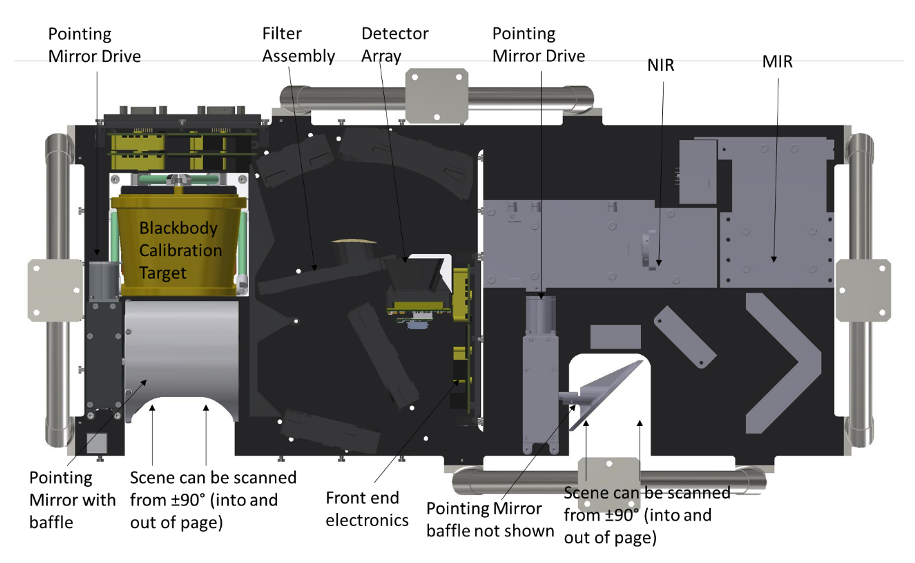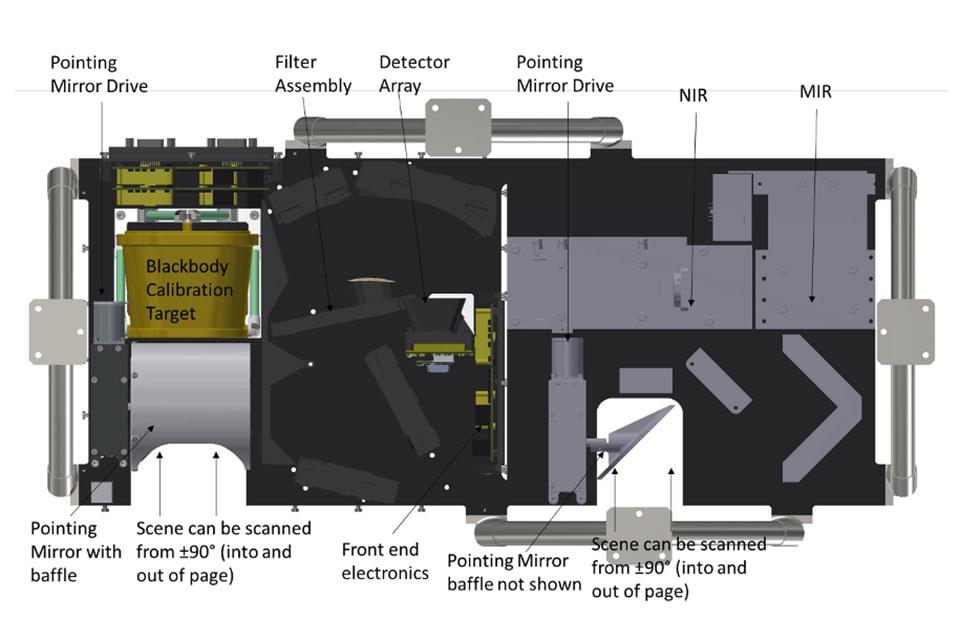As the European Space Agency’s Comet Interceptor mission moves from design phase to implementation, Professor Neil Bowles, Professor of Planetary Science, gives an insight into what it’s like to be part of an ambitious, global initiative. Professor Bowles is leading on the Modular Infrared Molecules and Ices Sensor (MIRMIS), one of two instruments on the mission.
Comet Interceptor will visit a comet but what makes it different to any previous mission is that we are sending the spacecraft to flyby a comet that has never previously encountered the inner Solar System. This means it is likely to be an object from a region known as the Oort cloud that exists at the very edge of our Solar System. The tricky part is that to flyby an object that hasn’t been near the Sun before also means that our target comet probably hasn’t been discovered yet, and this is where the ‘Interceptor’ part of the mission comes in.
Seeking a suitable target
Comet Interceptor will be launched with the Ariel space telescope (which the Department of Physics at Oxford is also working on) on an Ariane 62 rocket in ~2029. The spacecraft will travel to a point in space approximately 1.5 million km from Earth where the Earth and Sun’s gravity balance, known as the Earth-Sun second Lagrange point or L2; incidentally, the same position that the James Webb Space Telescope is now operating at. At this location in space, the spacecraft can wait for up to six years for a suitable target to be found, identified by its orbit from observations made by large survey telescopes on Earth and in space.
Once we have a suitable target Comet Interceptor will leave L2 and fly past the comet nucleus, splitting into three: a main Spacecraft, currently called A, and two smaller probes called B1 (supplied by the Japanese Space Agency JAXA) and B2 (supplied by ESA). Probes B1 and B2 will flyby at a close distance and relay their observations to Spacecraft A that is positioned at least 1000 km from the comet nucleus. Spacecraft A then relays this information along with observations from its own instruments back to Earth. The instrument we are helping to build here at the Department of Physics at Oxford is mounted on Spacecraft A.
Remote mapping
Our instrument is called the Modular Infrared Molecules and Ices Sensor (MIRMIS) and is a collaboration between ourselves in Oxford, VTT and University of Helsinki in Finland and science modelling support from colleagues at NASA Goddard Space Flight Center and the University of Central Florida. By measuring the light reflected and emitted in the infrared, MIRMIS will map remotely the composition and temperature of the comet’s nucleus and coma. The instrument is made up of three modules (Figure)

The Near and Mid Infrared modules (NIR/MIR) will measure spectra in the 0.9 to 5 micron region, rich in information on volatiles such as water vapour and organic material and are provided by the team at VTT Finland. The Thermal Infrared Imager (TIRI) will map the temperature and composition of the nucleus in a wavelength range from 6 to 25 microns. TIRI is being built here in Oxford, and we will be integrating and testing the complete MIRMIS instrument here before it goes to be attached to the spacecraft before launch.
Unique window into the early Solar System
Comet Interceptor will provide us with a unique window into the early Solar System and forms part of our wider work in the Department of Physics studying the airless bodies in our Solar System. Professor Carly Howett is a member of the science teams for NASA’s New Horizons mission to Pluto and the Kuiper belt, the Lucy mission to the Trojan asteroids near Jupiter and Europa Clipper mission to Jupiter’s icy moon that almost certainly has a sub-surface ocean. The TIRI part of MIRMIS is based on the Lunar Thermal Mapper instrument that is due to launch to the Moon next year (2023) as part of NASA’s Lunar Trailblazer mission. The UK’s contribution to MIRMIS is supported by the UK Space Agency.
Find out more about:
Comet Interceptor https://www.cometinterceptor.space
Lunar Trailblazer https://trailblazer.caltech.edu
Ariel Space telescope https://arielmission.space

